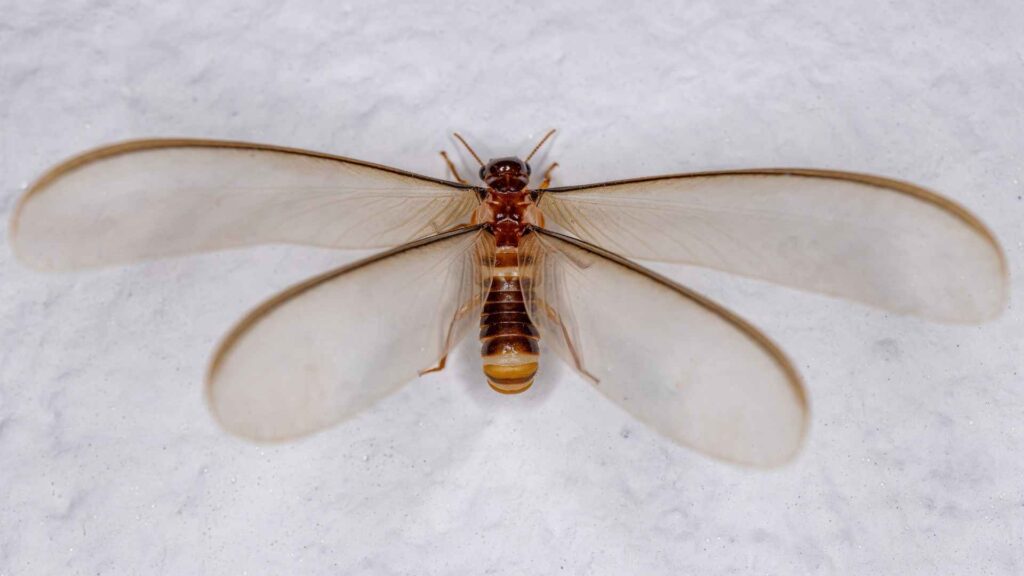Table Of Content
ToggleEver spotted winged insects flitting around your home and worried they might be termites? You’re not alone.
Flying termites, also known as alates, are a cause for concern as they signal a potential termite infestation.
This guide will equip you with the knowledge to understand these unwelcome visitors.
Flying termites, also known as alates, are the reproductive caste of a termite colony. They are essentially winged termites that emerge from a mature colony with the sole purpose of mating and starting new colonies elsewhere.
While all termites look similar, only alates have wings. These wings are typically light brown, translucent, and equal in length. Unlike flying insects like bees or wasps, flying termites are poor flyers and can only travel short distances before shedding their wings and focusing on establishing a new nest.

Flying termites don’t take to the skies for leisure cruises. Their swarming behavior is a crucial part of termite reproduction and colony expansion. Here’s why they take flight:
Contact us for immediate termite inspection and solutions.
Spotting flying termites around your home can be unsettling, but it’s important to stay calm and take action. Here are some signs to watch out for:
While flying termites might not seem threatening themselves, their presence signifies a bigger problem:
Schedule a termite assessment with our experts today.

If you suspect a termite infestation, take action quickly:
For severe infestations is better to hire a residential pest control service to get rid of flying termites.
As a pest control professional, I’ve seen firsthand the damage termites can cause. Early detection is key. If you see flying termites, don’t ignore them.
Take action quickly to identify the source of the infestation and eliminate it before it becomes a major problem.
By following the advice in this guide and maintaining a proactive approach, you can keep your home termite-free and ensure its structural integrity for years to come.
If you see flying termites inside your home, it’s a warning sign that you may have a termite infestation. This is because they swarm indoors to find mates and establish new colonies. However, if you see them only outdoors, it might not necessarily mean an infestation in your house, but they could be looking for a place to start a new colony nearby.
If you see flying termites around your property, it’s important to contact a pest control professional to inspect your home for signs of an infestation. Early detection and treatment is key to preventing serious damage to your property.
Your trusted pest control experts in Southern California. Keeping your neighborhood pest-free!